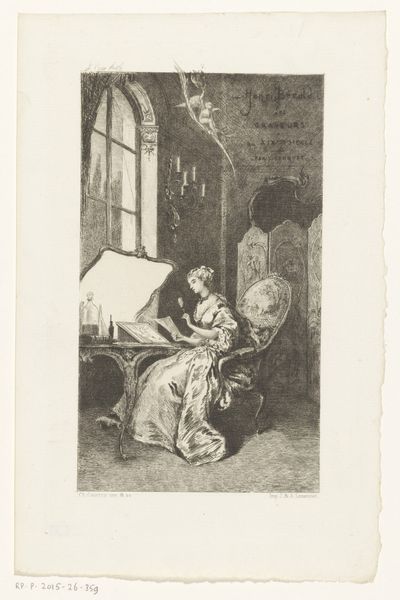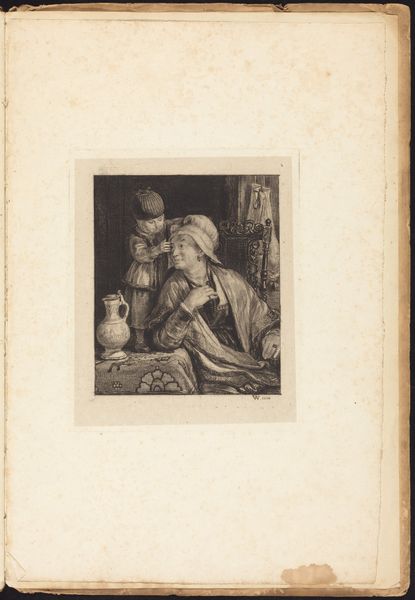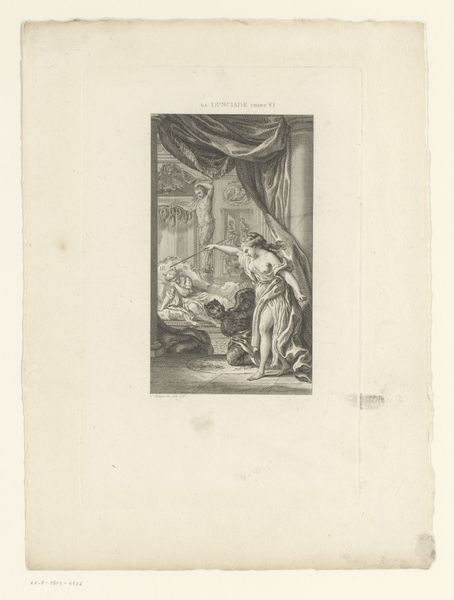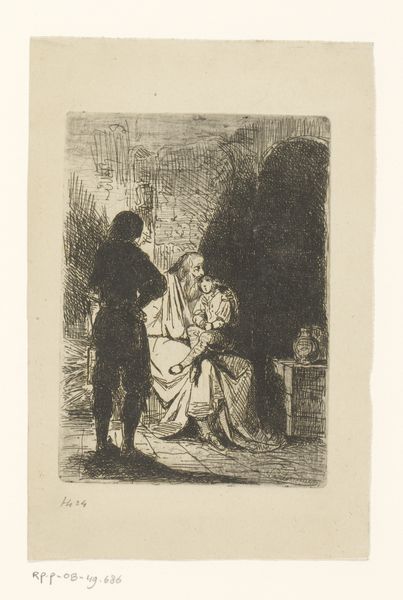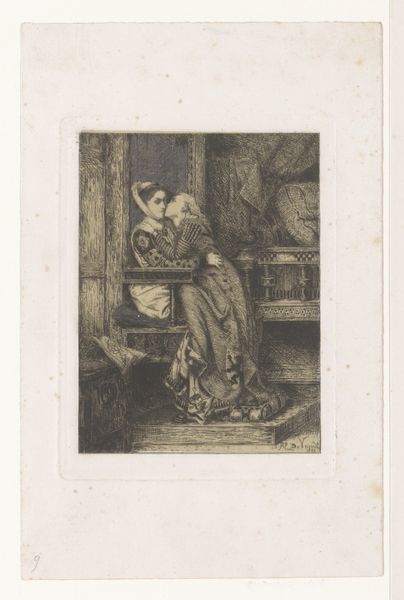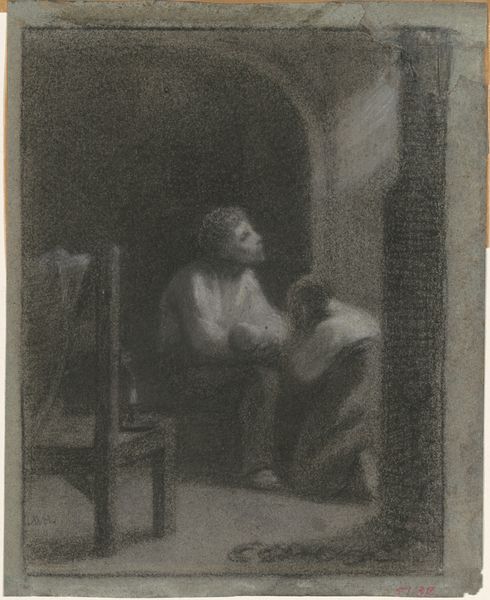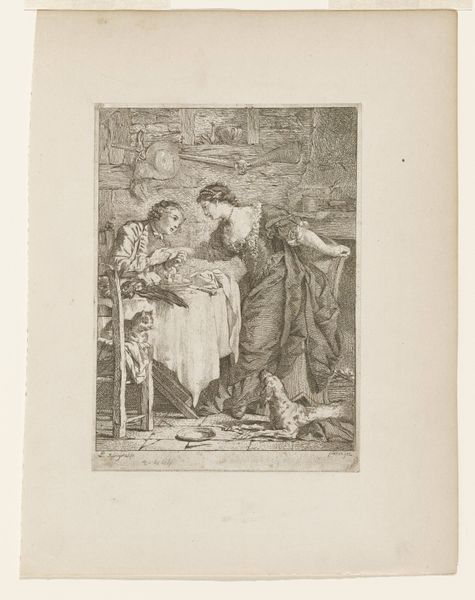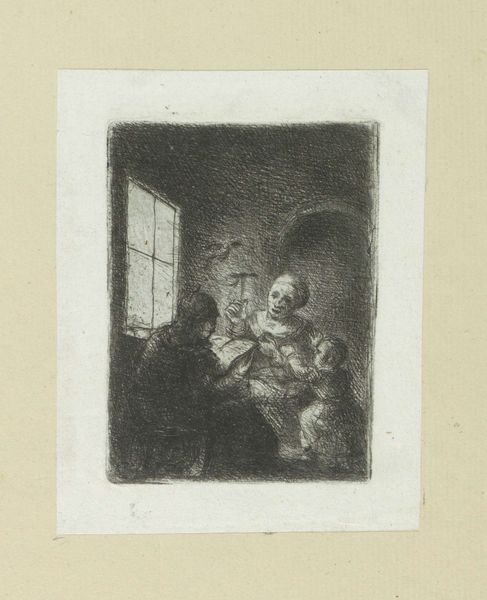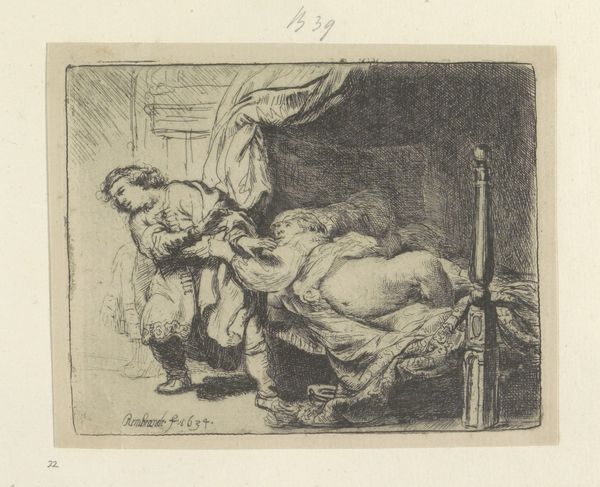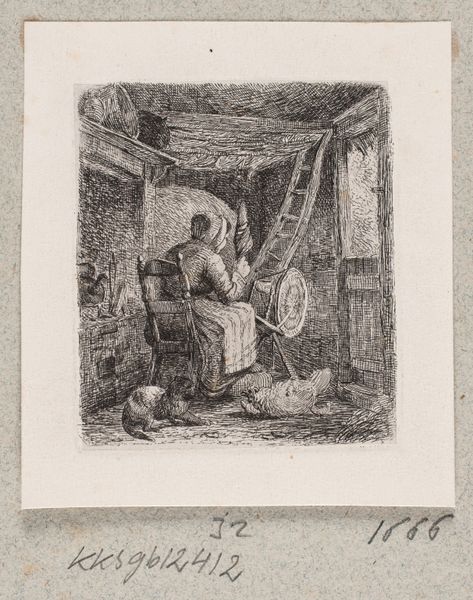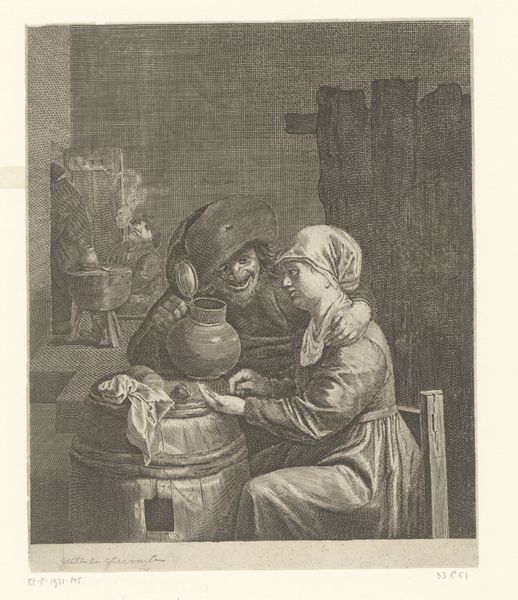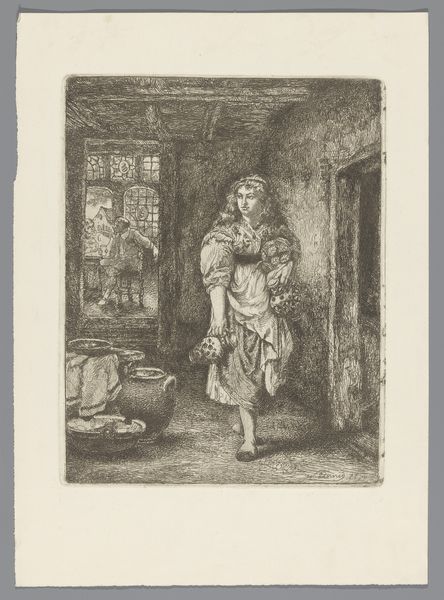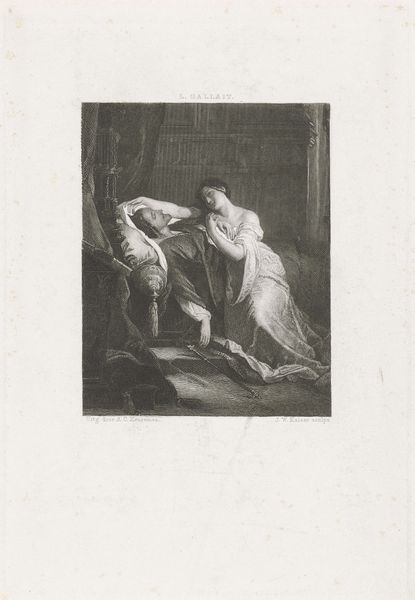
Dimensions: 2 13/16 x 2 1/8 in. (7.2 x 5.4 cm) (image)3 7/16 x 2 5/8 in. (8.7 x 6.7 cm) (sheet)
Copyright: Public Domain
Curator: Well, that's certainly dark. The composition throws you right into a domestic scene, but heavy with shadows, almost foreboding. Editor: Indeed. We’re looking at "Polish Charity", an etching by Jean-Pierre Norblin de la Gourdaine, likely created between 1774 and 1789. It’s currently part of the collection at the Minneapolis Institute of Art. The printmaking process itself lends a certain starkness to the imagery, doesn't it? It emphasizes the act of production and replication for a broader social context. Curator: Absolutely, etching gives this almost gritty feel to the image. What’s really striking is the subject matter: the intimate act of charity, a basic form of welfare. But this charity takes place in dim light, perhaps signifying secrets, back alleys, or difficult historical conditions. It really speaks volumes about the socio-political atmosphere that fueled its creation. Editor: I agree, this isn't some idealized version of altruism. Consider the visual storytelling within its historical context. Poland at this time was facing partitions, so it's a depiction that goes far beyond the act of providing relief to those in need: it speaks to the very essence of social support systems and power. You can sense some very potent symbolism is at play. Curator: Absolutely. Looking at the materiality itself, this etching embodies accessibility. As a readily reproducible medium, this work might’ve been widely circulated, impacting public perceptions. The physical work, this humble etching, thus became a powerful tool for constructing public sentiment. What was the process of producing an image of "charity" at this time? Editor: An important aspect. The artist would’ve needed access to printmaking technology and skills, which was heavily influenced by socio-economic power dynamics. Furthermore, there's the fascinating role that galleries and print sellers would've had in shaping access. I wonder, how did access to materials such as the inks, paper, and printing press available to Norblin and his studio inform the final piece? Curator: It is so relevant, given that materials determined the achievable fineness of lines and the subtlety of shadows in the artwork. Perhaps the contrast contributes to a dramatic impact for those encountering it, reinforcing the social weight of "charity" itself, and of the socio-economic environment that underpinned that particular act and representation. Editor: A perfect point! This image asks more questions than it answers and invites a crucial dialogue regarding the relationship between artist, materials, viewer and artwork. Curator: Precisely. A modest material expressing significant insights, wouldn’t you say?
Comments
minneapolisinstituteofart almost 2 years ago
⋮
Jean-Pierre Norblin de la Gourdaine was a French painter and printmaker active in Poland in the late 18th century. Norblin's charming miniature etchings, representing mostly male heads, street sellers, and vagabonds, reflect both in subject and technique the profound influence of Rembrandt's prints. Norblin was also drawn to Polish subjects, capturing the unfamiliar, exotic world around him in his depictions of men with colossal fur hats and curled moustaches, Cossacks, and Polish historical figures.
Join the conversation
Join millions of artists and users on Artera today and experience the ultimate creative platform.
